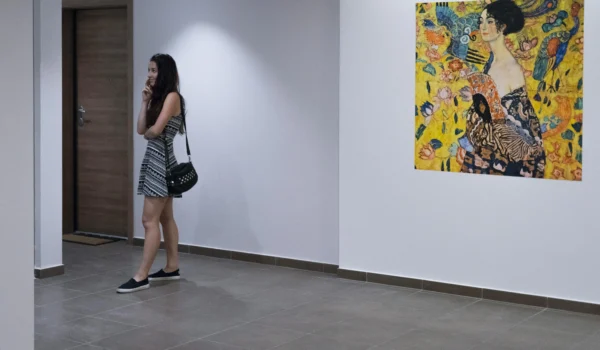Introduction
Minimalist art and fashion have made significant impacts on various creative fields, shaping the way we perceive design, architecture, and style. Emerging in the mid-20th century, minimalist art sought to strip away excess, focusing on simplicity, clean lines, and a reduction of essential elements. This ethos has transcended into other realms, including design, architecture, and fashion, where the principles of minimalism continue to inspire and influence creators worldwide. In this article, we delve into the profound influence of minimalist art on these interconnected disciplines, exploring how its aesthetics and philosophy have shaped contemporary creative landscapes.
Minimalist Art: A Brief Overview
Minimalist art emerged as a response to the complexity and emotional expressionism prevalent in the art world during the mid-20th century. Artists such as Donald Judd, Agnes Martin, and Dan Flavin embraced simplicity, geometric forms, and industrial materials, rejecting traditional notions of art-making. Minimalist artworks often feature monochromatic palettes, geometric shapes, and a focus on space and form. This deliberate reductionism aimed to evoke a sense of clarity and purity, encouraging viewers to engage with the essence of the artwork rather than its narrative or emotional content.
Minimalist Art in Design
The influence of minimalist art on design is unmistakable. Designers across various disciplines, from graphic design to product design, have embraced minimalism’s clean aesthetic and functional approach. The minimalist design prioritizes simplicity, clarity, and functionality, often employing white space, grid systems, and sans-serif typography. The minimalist ethos extends beyond visual aesthetics, informing design decisions that prioritize usability and user experience. In web design, for example, minimalist principles lead to intuitive interfaces with streamlined navigation, enhancing accessibility and engagement, such as the project of Motherhood website. Click here to see its features.
Minimalist Art in Architecture
Minimalism in architecture has also left an indelible mark on influencing the design of buildings and urban spaces. Architects such as Ludwig Mies van der Rohe and Tadao Ando championed minimalist principles, favoring clean lines, open spaces, and a harmonious relationship with the surrounding environment. Minimalist architecture emphasizes simplicity and functionality, often using materials such as glass, steel, and concrete to create sleek, uncluttered structures. The result is a built environment that prioritizes clarity, efficiency, and a sense of calm, reflecting the essence of minimalist art.
Minimalist Art and Fashion
Fashion, too, has been profoundly influenced by minimalist art, with designers embracing simplicity, restraint, and clean silhouettes. Icons like Coco Chanel and Calvin Klein epitomized minimalist chic, favoring timeless pieces with clean lines and neutral colors. Minimalist fashion celebrates understated elegance, focusing on quality craftsmanship and impeccable tailoring rather than fleeting trends. The minimalist aesthetic has permeated various aspects of the fashion industry, from runway collections to everyday essentials, influencing how we dress and perceive style.
The Contemporary Landscape
In today’s interconnected creative landscape, the influence of minimalist art on design, architecture, and fashion continues to evolve and shape trends. From sleek smartphone designs to minimalist storefronts and capsule wardrobes, minimalist principles permeate every aspect of modern life. The enduring appeal of minimalism lies in its ability to transcend fleeting trends, offering a timeless aesthetic that remains relevant across diverse cultural contexts.
Conclusion
Minimalist art and fashion have left an indelible mark on the creative landscape, influencing design, architecture, and style in profound ways. Emerging as a response to complexity and excess, minimalist principles prioritize simplicity, functionality, and clarity. From the clean lines of minimalist architecture to the understated elegance of minimalist fashion, the influence of minimalist art is evident in every aspect of contemporary design. As we continue to navigate an increasingly complex world, the timeless appeal of minimalism serves as a guiding light, reminding us to focus on what truly matters and embrace the beauty of simplicity.


